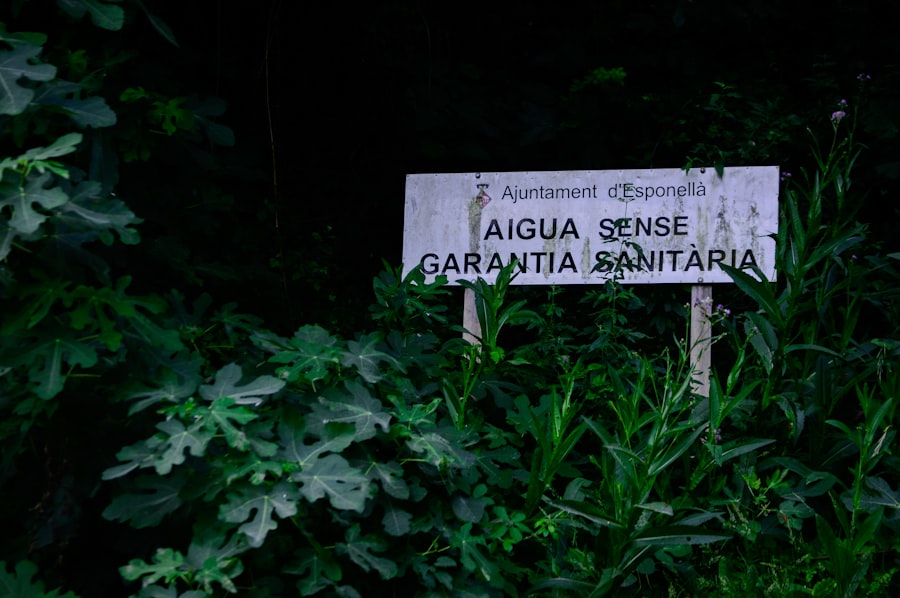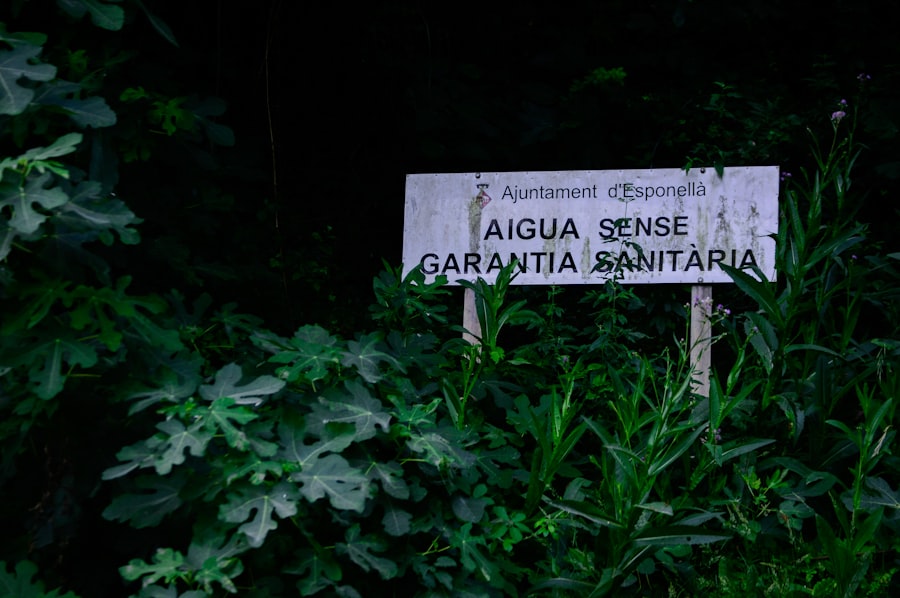The Ogallala Aquifer, one of the largest aquifers in the world, stretches across eight states in the United States, including South Dakota, Nebraska, Wyoming, Colorado, Kansas, Oklahoma, New Mexico, and Texas. This vast underground reservoir is a crucial source of freshwater, providing water for agricultural irrigation, drinking supplies, and industrial uses. Formed during the last Ice Age, the aquifer is primarily composed of porous rock and sediment that allows water to flow through it.
Its significance cannot be overstated, as it supports a substantial portion of the nation’s agricultural output and sustains millions of people living in the Great Plains region. The aquifer’s sheer size and capacity make it a vital resource for the United States. Covering approximately 174,000 square miles, it holds an estimated 3 trillion gallons of water.
However, the Ogallala Aquifer is not just a geological marvel; it is a lifeline for farmers and communities alike. The reliance on this aquifer has grown over the decades, particularly as agricultural practices have intensified and populations have increased. Understanding the Ogallala Aquifer’s role in both local and national contexts is essential for addressing the challenges it faces today.
Key Takeaways
- The Ogallala Aquifer is a vital underground water source in the Great Plains region of the United States, providing water for agriculture and drinking.
- Depletion of the Ogallala Aquifer is a serious concern due to its importance in sustaining agricultural production and providing drinking water for millions of people.
- Factors contributing to the depletion of the Ogallala Aquifer include over-extraction for agricultural irrigation, climate change, and population growth.
- Depletion of the Ogallala Aquifer has a significant impact on agriculture, leading to reduced crop yields and increased production costs.
- Efforts to conserve the Ogallala Aquifer include implementing water-saving technologies, promoting sustainable irrigation practices, and exploring alternative water sources for agriculture and drinking water.
The Importance of the Ogallala Aquifer
The Ogallala Aquifer plays a pivotal role in the agricultural landscape of the Great Plains. It supplies water to irrigate vast fields of corn, wheat, cotton, and other crops that are essential to both local economies and national food production.
The ability to access such a reliable water source has allowed farmers to cultivate crops in an otherwise arid region, contributing significantly to the agricultural output of the United States. Beyond agriculture, the aquifer is also crucial for drinking water supplies. Millions of residents in the Great Plains depend on groundwater from the Ogallala for their daily needs.
This reliance extends to urban areas as well, where municipal water systems often draw from the aquifer. The importance of this resource cannot be overstated; it is integral not only to food security but also to public health and community sustainability.
Current Status of the Ogallala Aquifer

As of 2023, the status of the Ogallala Aquifer is concerning. Studies indicate that significant portions of the aquifer are experiencing alarming rates of depletion due to over-extraction and unsustainable water management practices. In some areas, water levels have dropped dramatically, leading to fears about long-term viability.
The depletion is not uniform; certain regions are more affected than others, with some parts experiencing declines of over 100 feet in water levels since the mid-20th century. The current state of the aquifer reflects broader trends in water usage across the United States. While technological advancements in irrigation have improved efficiency, they have also led to increased demand for groundwater resources.
As climate change exacerbates drought conditions in many parts of the country, reliance on the Ogallala Aquifer has intensified, further straining its capacity. The situation calls for urgent attention and action to ensure that this vital resource can continue to support both agriculture and communities.
Factors Contributing to the Depletion of the Ogallala Aquifer
| Factor | Contribution to Depletion |
|---|---|
| Excessive groundwater pumping | Overuse of water for agriculture and municipal purposes |
| Climate change | Changes in precipitation patterns leading to reduced recharge |
| Population growth | Increased demand for water resources |
| Industrial activities | Extraction of water for industrial processes |
| Land use changes | Conversion of natural landscapes to urban or agricultural areas |
Several factors contribute to the ongoing depletion of the Ogallala Aquifer. One primary driver is agricultural practices that rely heavily on irrigation. Farmers often extract more water than can be naturally replenished through rainfall or other sources.
This over-reliance on groundwater has been exacerbated by advancements in irrigation technology that allow for more extensive crop cultivation but also lead to increased water consumption. Additionally, population growth and urbanization in regions surrounding the aquifer have heightened demand for water resources. As cities expand and more people move into these areas, the pressure on groundwater supplies increases.
Industrial activities also contribute to depletion as factories and businesses draw from the aquifer for their operations. Together, these factors create a perfect storm that threatens the sustainability of this critical water source.
Impact of Depletion on Agriculture
The depletion of the Ogallala Aquifer has profound implications for agriculture in the Great Plains. As water levels decline, farmers face increasing challenges in maintaining crop yields. Reduced access to irrigation water can lead to lower productivity and higher costs for farmers who must seek alternative sources or invest in more efficient irrigation technologies.
This situation can create a ripple effect throughout local economies that depend on agriculture as a primary source of income. Moreover, as water becomes scarcer, competition among farmers for available resources intensifies. This competition can lead to conflicts over water rights and exacerbate tensions within communities.
In some cases, farmers may be forced to fallow land or switch to less water-intensive crops, which can disrupt established agricultural practices and threaten food security in the region. The long-term sustainability of agriculture in areas reliant on the Ogallala Aquifer is at risk if current trends continue.
Impact of Depletion on Drinking Water

The depletion of the Ogallala Aquifer also poses significant risks to drinking water supplies for millions of residents in the Great Plains. As groundwater levels drop, municipalities may struggle to maintain adequate supplies for their populations. In some areas, wells that once provided reliable access to clean drinking water may run dry or become contaminated due to increased salinity or other factors associated with declining water levels.
The implications for public health are serious; communities may face increased costs associated with finding alternative sources of drinking water or investing in infrastructure to access deeper groundwater reserves. Additionally, reliance on less reliable sources can lead to concerns about water quality and safety. As communities grapple with these challenges, ensuring access to safe drinking water becomes an increasingly pressing issue tied directly to the health of the Ogallala Aquifer.
Efforts to Conserve the Ogallala Aquifer
In response to growing concerns about depletion, various efforts have been initiated to conserve the Ogallala Aquifer. Agricultural organizations, government agencies, and local communities are collaborating on initiatives aimed at promoting sustainable water management practices. These efforts include encouraging farmers to adopt more efficient irrigation techniques such as drip irrigation and soil moisture monitoring systems that minimize water waste.
Additionally, educational programs are being implemented to raise awareness about the importance of conserving groundwater resources. By informing farmers and residents about best practices for water use and management, stakeholders hope to foster a culture of conservation that prioritizes long-term sustainability over short-term gains. These initiatives represent a crucial step toward ensuring that future generations can continue to rely on the Ogallala Aquifer as a vital resource.
Alternative Water Sources for Agriculture and Drinking Water
As concerns about the depletion of the Ogallala Aquifer grow, exploring alternative water sources becomes increasingly important. Rainwater harvesting is one potential solution that can help supplement irrigation needs while reducing reliance on groundwater. By capturing and storing rainwater during wet periods, farmers can create a more sustainable system that lessens their dependence on aquifer resources.
Desalination is another avenue being explored, particularly in regions where saltwater intrusion poses a threat to freshwater supplies. While desalination technology can be costly and energy-intensive, advancements are being made that could make it a viable option for providing additional drinking water sources in arid regions. Furthermore, recycling wastewater for agricultural use presents an opportunity to reduce pressure on freshwater resources while promoting sustainable practices.
Economic Implications of Ogallala Aquifer Depletion
The economic implications of depleting the Ogallala Aquifer are far-reaching and complex. As agricultural productivity declines due to reduced access to irrigation water, farmers may face lower yields and increased costs associated with finding alternative sources or investing in new technologies. This decline can lead to decreased income for farmers and negatively impact local economies that rely heavily on agriculture.
Moreover, as competition for dwindling water resources intensifies, property values may be affected as well. Areas with reliable access to groundwater may see increased demand and higher prices, while regions facing severe depletion could experience economic downturns as agricultural operations become less viable. The interconnectedness of these economic factors underscores the urgency of addressing aquifer depletion before it leads to broader economic instability in affected regions.
Potential Solutions to Replenish the Ogallala Aquifer
To address the challenges posed by depletion of the Ogallala Aquifer, several potential solutions have been proposed aimed at replenishing this vital resource. One promising approach involves implementing managed aquifer recharge (MAR) techniques that allow excess surface water from rivers or reservoirs to be directed back into the aquifer during periods of high flow. This method can help restore groundwater levels while also improving overall water quality.
Additionally, promoting sustainable land-use practices can play a significant role in enhancing aquifer recharge rates. By implementing conservation tillage methods or planting cover crops that improve soil health and reduce erosion, farmers can increase infiltration rates and promote natural replenishment processes within their fields.
The Future of the Ogallala Aquifer
The future of the Ogallala Aquifer hangs in a delicate balance as pressures from agricultural demands, population growth, and climate change continue to mount. While challenges abound, there is hope through concerted efforts aimed at conservation and sustainable management practices. By prioritizing education and collaboration among stakeholders—farmers, policymakers, scientists, and community members alike—there exists an opportunity to safeguard this critical resource for generations to come.
Ultimately, ensuring a sustainable future for the Ogallala Aquifer will require innovative thinking and a commitment to responsible stewardship of water resources. As awareness grows about its importance and vulnerability, there is potential for positive change that could lead not only to healthier ecosystems but also thriving communities supported by reliable access to clean water. The path forward will demand dedication and cooperation but holds promise for preserving one of America’s most vital natural assets.
The Ogallala Aquifer, a crucial water source for agriculture in the central United States, is facing significant depletion due to over-extraction and insufficient recharge rates. This issue raises concerns about the sustainability of water resources in the region and the potential impact on food production. For a deeper understanding of the challenges facing the Ogallala Aquifer and potential solutions, you can explore a related article on this topic by visiting this page. This article provides insights into the current state of the aquifer and discusses strategies for managing water resources more effectively.
WATCH NOW! Why America’s Heartland Is Disappearing Fast
FAQs
What is the Ogallala Aquifer?
The Ogallala Aquifer is a vast underground reservoir that spans across eight states in the United States, providing water for agriculture, industry, and domestic use.
Is the Ogallala Aquifer running out?
Yes, the Ogallala Aquifer is being depleted at a faster rate than it is being recharged, leading to concerns about its long-term sustainability.
What are the main causes of the depletion of the Ogallala Aquifer?
The main causes of the depletion of the Ogallala Aquifer include excessive groundwater pumping for agricultural irrigation, as well as natural evaporation and seepage.
What are the potential consequences of the Ogallala Aquifer running out?
If the Ogallala Aquifer were to run out, it would have significant impacts on agriculture, food production, and the economy in the region. It could also lead to increased competition for water resources and potential conflicts.
What are some potential solutions to address the depletion of the Ogallala Aquifer?
Some potential solutions to address the depletion of the Ogallala Aquifer include implementing more sustainable water management practices, promoting water conservation, and exploring alternative water sources such as rainwater harvesting and wastewater reuse.
